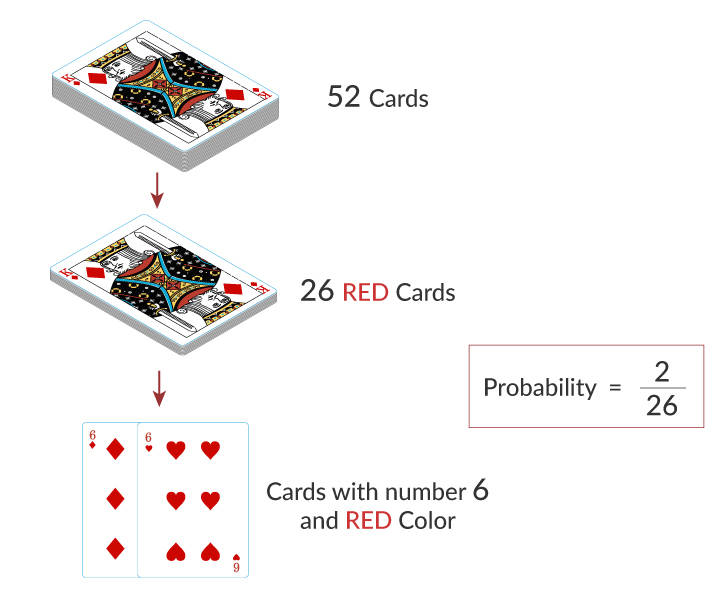Understanding Conditional Probability: Definition, Formula, and Applications
Table of Content:
Conditional probability is the probability of event \(A\) happening, given that we know event \(B\) has occurred. It is computed by dividing the joint probability of events \(A\) and \(B\) by the probability of event \(B\).
The formula for conditional probability is:
\begin{equation} P(A|B) = \frac{P(A \cap B)}{P(B)} \end{equation}
where \(P(A|B)\) represents the probability of event \(A\) occurring given that event \(B\) has occurred. \(P(A \cap B)\) represents the joint probability of events \(A\) and \(B\) occurring, and \(P(B)\) represents the probability of event \(B\) occurring.
Conditional Probability:
The probability of an event ( A ), given that another event ( B ) has already occurred.
P(A∣B) or P(A, given B)

Question:
Given that you draw a red card from a deck of 52 cards, what is the probability that it is a card with number 6?
Solution:
P(Six∣Red)= 2/26 = 1/13
Explanation:
Among the 26 red cards, there are two cards with number 6. Therefore, it is 1/13
